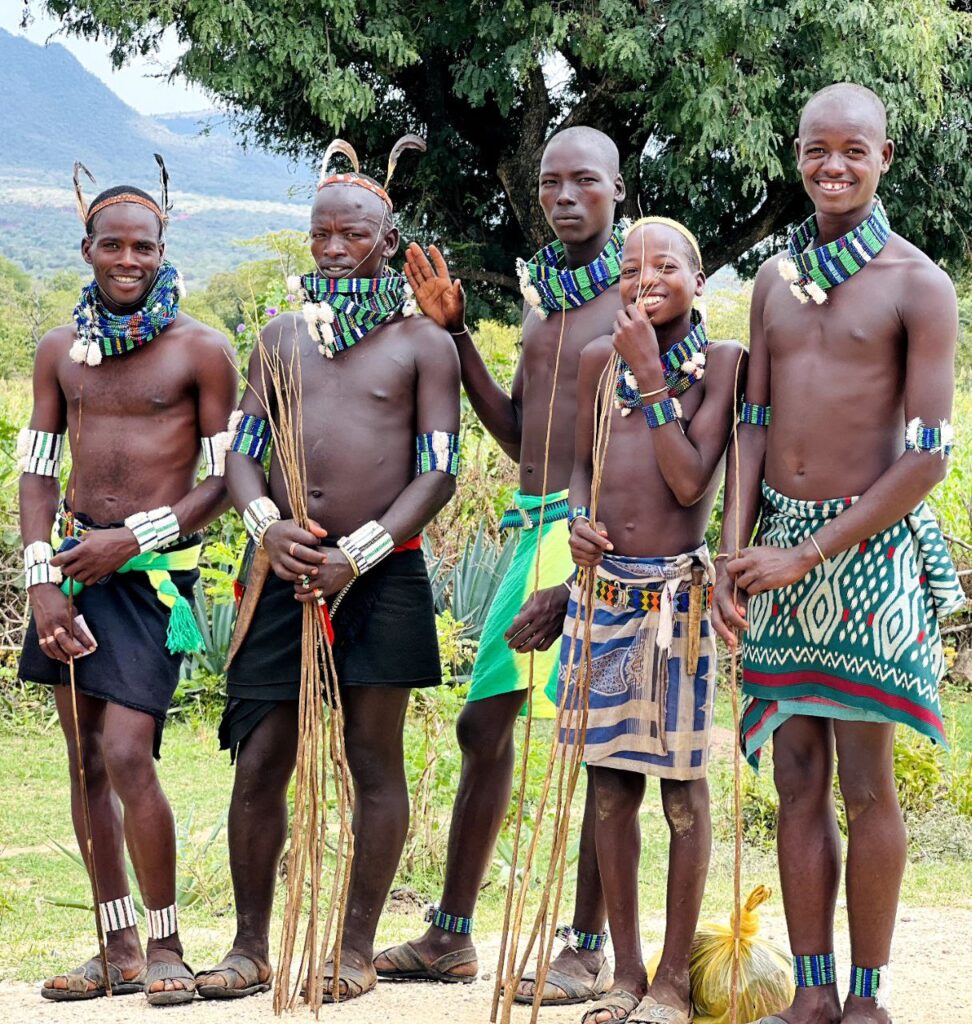Banna is a semi-nomadic pastoral population of around 60, 000 living near the Kenyan border. Their history is linked to that of the Hamar tribe as well, leading to a similar language and culture. Their livelihoods are centered around breeding cattle, sheep, and goats, and during the dry season they also collect and sell wild honey at local tribal markets.
Banna villages are set up with family huts built in a circle around the cattle in a central area. The huts are built with flexible poles folded inwards and drawn together to form a dome shape, covered in straw and cloth mats.
Like the Hamar and Kara people, the ceremony of bull jumping to mark a boy becoming a man and grant him the ability to marry and own cattle is incredibly important. They also perform rituals based around their traditional religion in which natural objects such as trees and rocks are inhabited by spirits.
As is the case for most tribes in the Omo Valley, clothing, styling, and body modification are an important part of the culture. Banna men colour and fix their hair with clay, which is then adorned with feathers, flowers, and beads. Girls have short, uncoloured hair until they marry, after which their hair is longer, braided and coloured with red clay.


